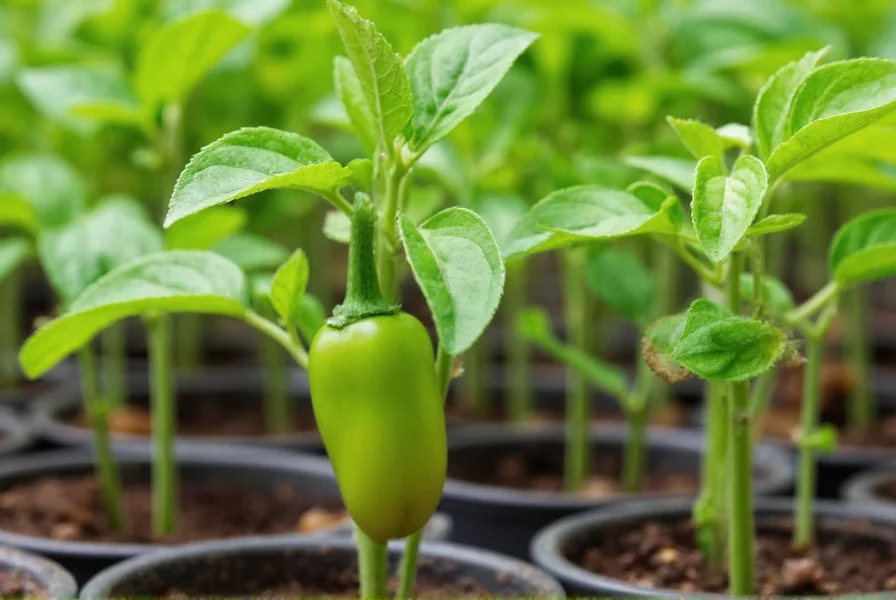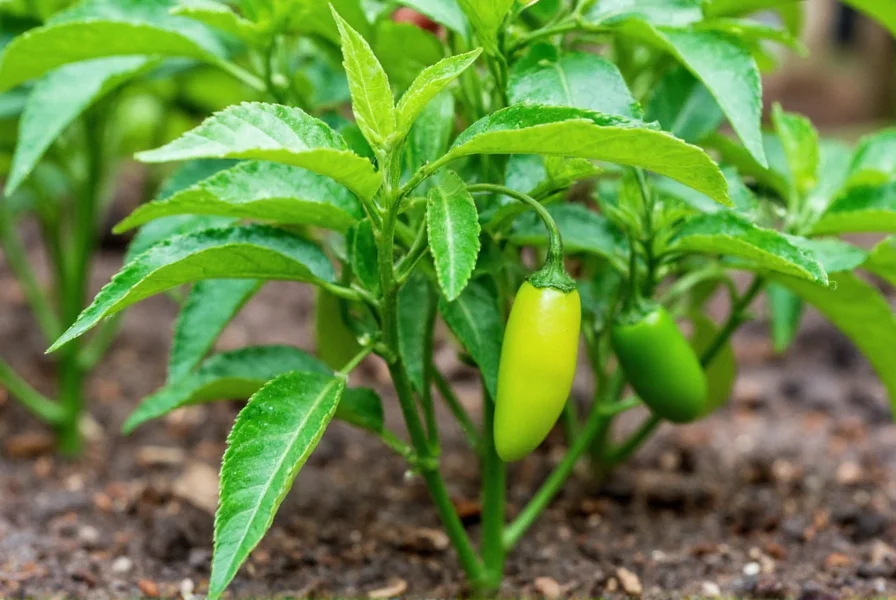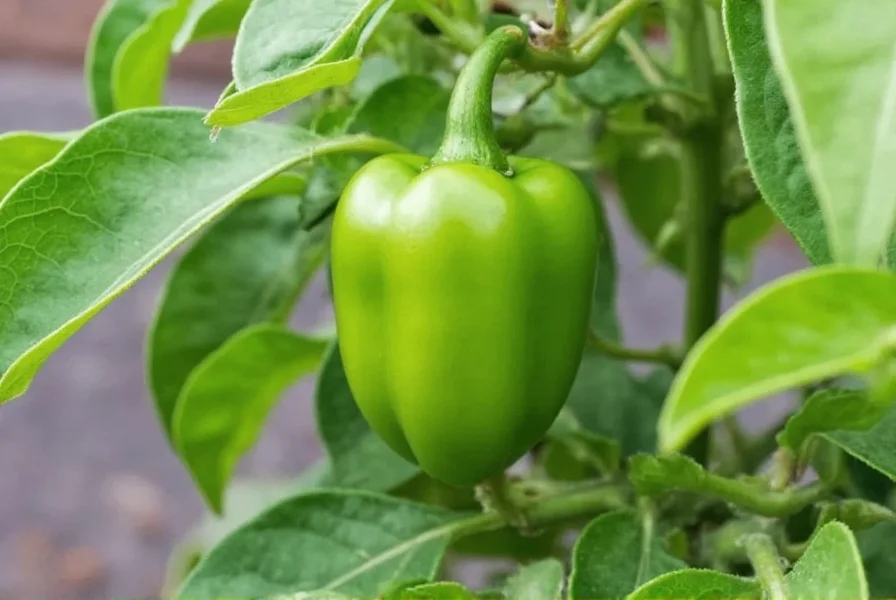Growing your own jalapeno peppers provides fresh, flavorful ingredients for salsas, pickling, and cooking. These medium-heat chili peppers (3,500-8,000 Scoville units) thrive in warm climates but can be successfully cultivated in most regions with proper timing and care. Whether you're a beginner gardener or expanding your vegetable patch, understanding the specific needs of jalapeno plants ensures a bountiful harvest.
Understanding Jalapeno Pepper Basics
Jalapeno peppers (Capsicum annuum) originated in Mexico and belong to the nightshade family. They typically grow 2-3 feet tall and produce 2-4 inch peppers that start green and mature to red. Unlike some chili varieties, jalapenos perform well in containers or garden beds, making them accessible for most home growers. The key to successful jalapeno cultivation lies in proper planting technique, consistent watering, and appropriate soil conditions.

Optimal Timing for Planting Jalapenos
The best time to plant jalapeno peppers depends on your climate zone. In most regions, start seeds indoors 8-10 weeks before your last expected frost date. This gives seedlings enough time to develop before transplanting outdoors. Wait to move plants outside until both daytime and nighttime temperatures consistently stay above 50°F (10°C), with soil temperatures reaching at least 60°F (16°C).
For direct sowing outdoors (not recommended in most climates), wait until all danger of frost has passed and soil has warmed significantly. Jalapenos need 120-150 frost-free days to reach full maturity, so northern gardeners often achieve better results with indoor-started seedlings.
| Climate Zone | Indoor Start Date | Transplant Date | Harvest Timeframe |
|---|---|---|---|
| Zones 3-5 | Early March | Mid-May to early June | July to September |
| Zones 6-8 | Mid to late February | Early to mid-May | June to October |
| Zones 9-11 | Late January to February | March to April | May to November |
Soil Preparation Requirements
Jalapeno peppers thrive in well-draining soil rich in organic matter. The ideal soil pH ranges from 6.0 to 7.0. Before planting, amend your garden bed with 2-3 inches of compost or well-rotted manure to improve soil structure and nutrient content. Avoid using fresh manure, which can burn plants and introduce pathogens.
For container growing, use a high-quality potting mix rather than garden soil. Choose containers at least 12 inches deep with adequate drainage holes. Jalapenos develop extensive root systems, so proper drainage prevents root rot while maintaining consistent moisture.
Planting Jalapeno Seeds vs. Transplants
You can grow jalapenos from seeds or purchase established seedlings. Starting from seeds gives you more variety options and is more economical for larger plantings. When planting jalapeno seeds:
- Plant seeds 1/4 inch deep in seed starting mix
- Maintain soil temperature of 75-85°F (24-29°C) for optimal germination
- Keep soil consistently moist but not soggy
- Provide 12-16 hours of light daily once seedlings emerge
- Thin to one strong seedling per container when first true leaves appear
When transplanting seedlings outdoors:
- Harden off plants gradually over 7-10 days
- Dig holes slightly larger than root balls
- Plant at the same soil depth as in containers (don't bury the stem)
- Space plants 18-24 inches apart in rows 24-36 inches apart
- Water thoroughly after planting

Essential Care for Healthy Jalapeno Plants
Proper watering represents one of the most critical aspects of jalapeno care. Water deeply 1-2 times per week rather than frequent shallow watering. Aim for 1-2 inches of water weekly, adjusting for rainfall and temperature. Mulching with 2-3 inches of organic material helps maintain consistent soil moisture and temperature while suppressing weeds.
Fertilize jalapeno plants monthly with a balanced fertilizer (10-10-10) or one slightly higher in phosphorus to encourage fruiting. Avoid excessive nitrogen, which promotes leaf growth at the expense of fruit production. When plants reach 8-10 inches tall, apply a side dressing of compost or balanced fertilizer.
Monitor for common pests like aphids, spider mites, and flea beetles. Hand-pick larger pests or use insecticidal soap for infestations. Jalapenos generally experience fewer disease problems when grown in proper conditions with good air circulation.
Troubleshooting Common Jalapeno Growing Problems
Blossom end rot (dark, sunken spots on fruit bottoms) indicates calcium deficiency, often caused by inconsistent watering rather than actual lack of calcium in soil. Maintain even soil moisture to prevent this issue.
Yellowing leaves may signal overwatering, nutrient deficiency, or pests. Check soil moisture first, then inspect for pests, and finally consider a balanced fertilizer application if needed.
Poor fruit set typically results from extreme temperatures (above 90°F/32°C or below 60°F/15°C), inadequate pollination, or improper fertilization. Gently shaking plants during flowering can improve pollination.
Harvesting Your Jalapeno Peppers
Harvest jalapenos when they reach 2-4 inches long and have a firm, glossy appearance. Most gardeners pick them when green, but allowing peppers to ripen to red increases both heat and sweetness. Use sharp scissors or pruning shears to cut peppers from the plant, leaving a small stem attached.
Regular harvesting encourages continued production. Jalapenos typically begin producing 70-80 days after transplanting. Store harvested peppers in the refrigerator for up to two weeks, or freeze, dry, or pickle them for longer preservation.
Frequently Asked Questions
How deep should I plant jalapeno seeds?
Plant jalapeno seeds 1/4 inch deep in seed starting mix. When transplanting seedlings outdoors, plant at the same soil depth as they were growing in their containers - do not bury the stem deeper than it was previously growing.
Can I grow jalapeno peppers in containers?
Yes, jalapenos grow well in containers. Choose pots at least 12 inches deep with drainage holes. Use high-quality potting mix rather than garden soil. Container-grown jalapenos require more frequent watering and may need additional support as they grow larger.
How often should I water jalapeno plants?
Water jalapeno plants deeply 1-2 times per week, providing about 1-2 inches of water. Container plants may need watering daily during hot weather. The soil should remain consistently moist but never soggy. Mulching helps maintain even moisture levels.
Why are my jalapeno plants not producing fruit?
Poor fruit production typically results from extreme temperatures (above 90°F or below 60°F), inconsistent watering, improper fertilization (too much nitrogen), or inadequate pollination. Ensure proper spacing for air circulation and consider gently shaking plants during flowering to improve pollination.











 浙公网安备
33010002000092号
浙公网安备
33010002000092号 浙B2-20120091-4
浙B2-20120091-4